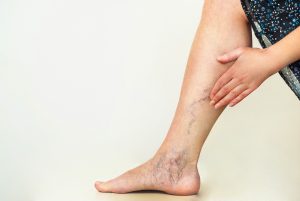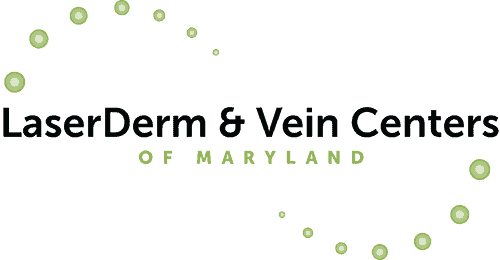 It is estimated that 40% of women have varicose veins or spider veins. Men also develop them, but with a lower frequency. There are many factors that predispose to the development of these unsightly – and often symptomatic – veins, the most important being heredity. They can be inherited from the maternal or paternal side of the family. If someone is predisposed, they can appear as early as the teen years although most often they appear later. In addition, pregnancy, standing occupations, obesity, injury, previous thrombophlebitis, along with other factors may contribute to their development and progression.
It is estimated that 40% of women have varicose veins or spider veins. Men also develop them, but with a lower frequency. There are many factors that predispose to the development of these unsightly – and often symptomatic – veins, the most important being heredity. They can be inherited from the maternal or paternal side of the family. If someone is predisposed, they can appear as early as the teen years although most often they appear later. In addition, pregnancy, standing occupations, obesity, injury, previous thrombophlebitis, along with other factors may contribute to their development and progression.
What are Varicose Veins?
Varicose veins are enlarged, non-functional, veins that are more than 2 millimeters in width and may exceed 2 centimeters. They may be blue or green or they may appear as protruding, tortuous cords that course under the skin.
Because the valves in varicose veins do not function normally, varicose veins are most apparent when standing due to their inability to prevent blood from pooling with gravity. Often varicose veins seem to disappear when lying down or with leg elevation.
What are Spider Veins?
Spider veins are enlarged veins less than 2 millimeters in width. They appear deep red, blue, or purple. While often flat, they may protrude, especially when standing. Sclerotherapy is the most effective method for removing spider veins.
What are Dilated Capillaries?
Dilated Capillaries (also referred to as ‘broken capillaries’, or ‘broken blood vessels’) appear as red or pink thread-like lines, usually less than 0.2 millimeters in width. When a large number of capillaries are clustered they may have the appearance of a red patch or a bruise that never disappears. Besides the legs, dilated capillaries are often seen on the face and nose. Varicose veins can be treated with Endovenous Ablation and Sclerotherapy. Spider Veins are treated with Sclerotherapy and Dilated Capillaries are treated with Vascular Laser.
Sclerotherapy of Spider Veins
Sclerotherapy of Varicose Veins
OUR OFFICE IS COMPLIANT WITH THE CURRENT MARYLAND REGULATIONS INCLUDING: 10.32.09: Delegation and Assignment of Performance of Cosmetic Medical Procedures and Use of Cosmetic Medical Devices. This is a Maryland safety regulation that governs who can legally perform medical cosmetic procedures. Dr. Green administers all injectable treatments (including Botox™, Juvederm™, Voluma™, Kybella™, and other fillers & Sclerotherapy) and laser treatments.
Sign up for monthly promotions and office updates!
By submitting this form, you are consenting to receive marketing emails from: David Green M.D. and LaserDerm & Vein Centers of Maryland, 4800 Montgomery Lane L50, Bethesda, MD, 20814, US, http://www.laserderm.net. You can revoke your consent to receive emails at any time by using the SafeUnsubscribe® link, found at the bottom of every email. Emails are serviced by Constant Contact.
Have Questions & Want More Information?
- Copyright © 2024 LaserDerm Vein Centers of Maryland
- Web Development by NavaWeb
